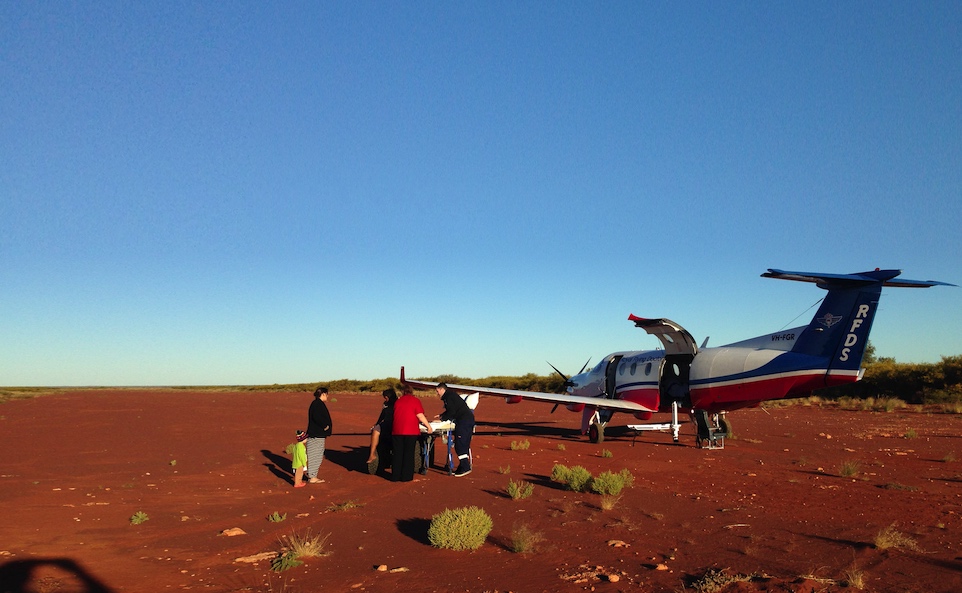Reaching for the cloud: stroke telehealth
A truly unique telehealth program promises to link the nation’s
health workforce like never before.
A stroke telehealth platform is being co-designed with our partners so pilot projects can begin in Queensland, South Australia and Victoria. The nation’s prehospital health workforce will soon be supported by the Australian Stroke Alliance like never before, regardless of location.
The first pilot will be completed by early 2023 using a stroke-capable road ambulance in a regional setting.
The Australian Stroke Alliance’s telehealth platform is led by perfusion imaging specialist, Associate Professor Andrew Bivard, and neurologist Professor Mark Parsons who have spent six years designing and testing an all-in-one solution for health carers on the frontline.
The platform is a game-changer as it:
- can be customised to meet unique regional requirements for the first time in Australia’s healthcare history, while demonstrating state and federal cooperation
- supports clinicians, ambulance paramedics, and allied health workers to improve urgent stroke diagnosis like never before with a roster of stroke physicians 24-hours a day
- taps into the expertise of the Royal Flying Doctor Service’s Central Operations team
- provides the foundation for brain imaging at the scene of a stroke within the next five years on the nation’s road and air mobile stroke units.
"It is always frustrating seeing patients who have lost their ability to walk or speak after a stroke. But this is worse when you know that they could not receive treatment just because they lived remotely. Stroke treatment should not depend on the place where you live."
- Dr Alvaro Cervera, neurologist, Royal Darwin Hospital
There’s an app for that
In another first, the platform uses a cloud-based app that ensures accurate diagnosis real time, connecting the first responders to expert neurological opinion to facilitate rapid stroke treatment. Among its features:
- It uses a mobile phone, providing simple note taking, and collection of patient information without needing to write by hand
- It offers an easy-to-use form and audio-visual link to immediately share observations via the cloud to the neurologist
- Every health professional in the care chain is linked in real time. For example, a surgical team waiting to offer thrombectomy is kept up to speed during the patient’s transit
- It supports the simple collection of data for clinical trials, and the mining of data, generated using machine learning.
Technical specs
- Hardware and software agnostic
- The only comprehensive, economical package for telemedicine – loaded with pre-notification, messaging, videoconferencing, note taking, and imaging viewing
- It is very reliable and has not experienced a single outage in 18-months of testing.
Portable brain scanners
While the pilot is underway, the Stroke Alliance is preparing to introduce portable brain scanners so a hospital-based neurologist can accurately diagnose the type of stroke. Only then can powerful clot-busting drugs be administered, within a strict time window of 4.5 hours, to suitable patients, at the scene of the stroke. The platform’s audio and visual services will provide unprecedented patient to specialist interaction.
"Doctors tell us that their diagnosis and treatment of a stroke patient requires more than just images of the patient’s brain. Ideally, they need to actually see a stroke patient when making a diagnosis"
- co-designer Assoc Prof Andrew Bivard
The Alliance’s telehealth platform
- Addresses the growing disparity in stroke outcomes for rural, remote and Indigenous communities
- Offers real time assessment for stroke intervention in remote locations, supporting rural practitioners in diagnosis and treatment
- Implements a nationally coordinated stroke telemedicine network to overcome various limited services.
As well, it:
- Builds on the highly successful Victorian Stroke Telemedicine Service which has delivered safe thrombolysis for seven years
- Works with all states and territories to offer a national, digital system
- Adapts to different geographies responding to the need for tailored approaches to telehealth. We know that one size does not fit all
- Designs telestroke models to meet the specific needs of regional Indigenous Australians who have a 3-fold rate of acute ischemic stroke and mortality compared to non-Indigenous Australians.
A truly national network
The Stroke Alliance is creating three important links: to state health departments, local ambulance services, to patients’ electronic health records, major hospitals and to a data hub for optimisation modelling. This is a world-first for mobile pre-hospital stroke care, enabling not just more effective and efficient care but it underpins long-term optimisation of emergency health resource deployment across our vast country. Academic partners across the country include the Ingham Institute of Applied Medical Research, University of Melbourne, the University of Sydney’s Brain and Mind Centre and University of New South Wales’ SPHERE — the Sydney Partnership for Health, Education, Research and Enterprise.

This is a real-time solution for remote Australians who have, until now, been overlooked.
A resilient and consumer-responsive workforce
The Alliance is committed to developing optimisation modelling tools to predict the nation’s requirements for ground-breaking pre-hospital resource allocation. For the first time, digital modelling will help build a policy framework that achieves demand-responsive and cost-effective allocation of health resources across the nation.
Together with the nation’s ambulance partners, including the Royal Flying Doctor Service, we are developing a platform to model and test resource allocation of our novel road and air stroke units across Australia. This will provide a much-needed sustainable resource for optimisation, long-term.
"We will identify the barriers so we offer the right treatment, at the right time, for the right patient"
- Neurologist and co-chief investigator, Professor Stephen Davis
Meet telehealth neurologist, Chris Bladin.
Meet one of the Alliance’s telestroke architects, Andrew Bivard.
Read more: Bivard A, Churilov L and Parsons M — Artificial intelligence for decision support in acute stroke in Nature Reviews Neurology.
Sign up for our newsletter to keep in-touch